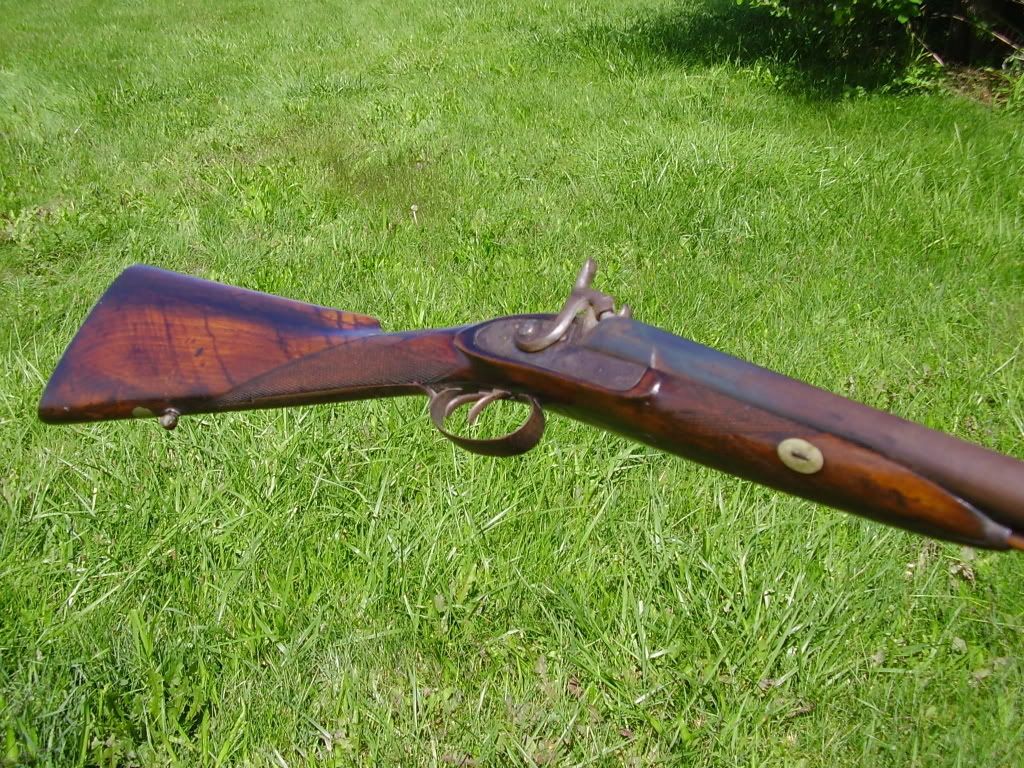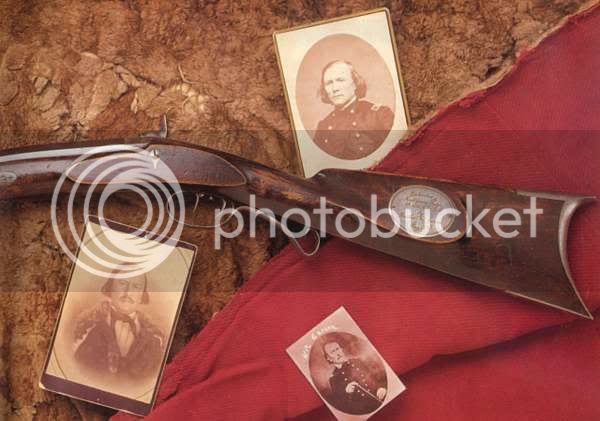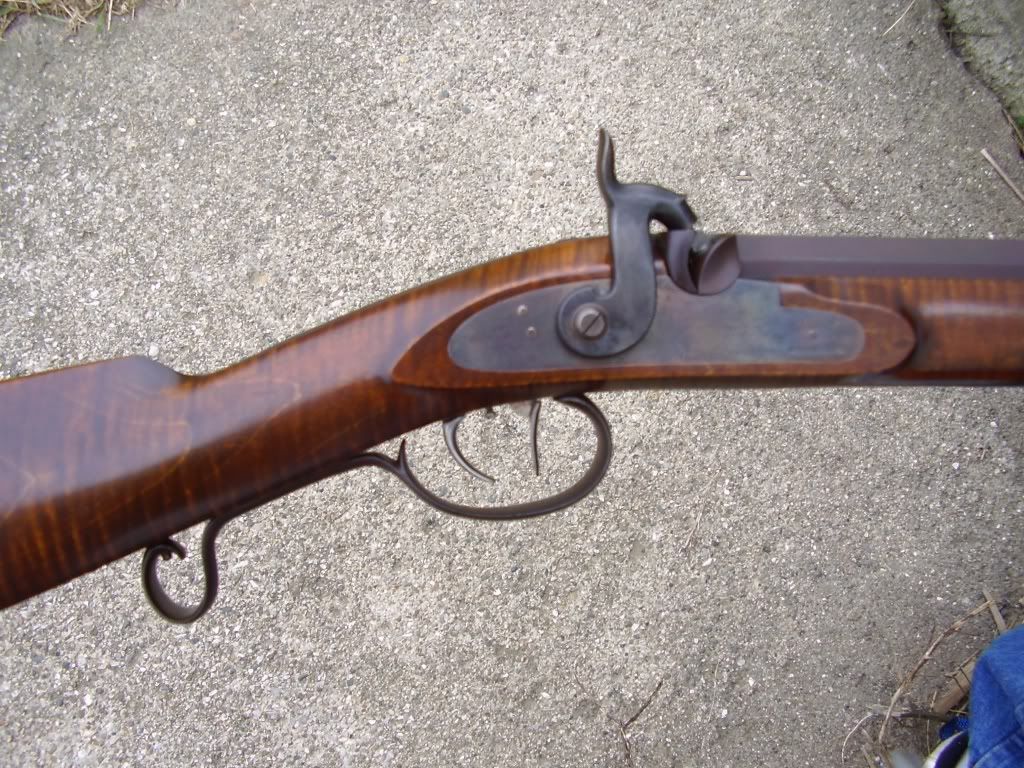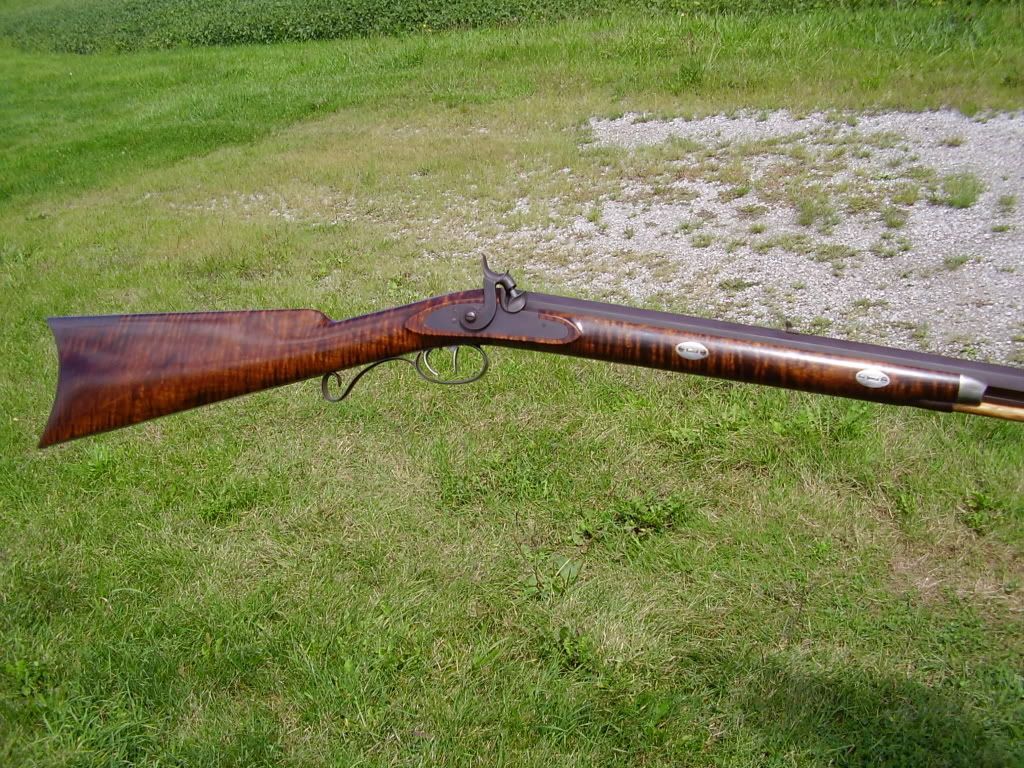From Don Stith himself - well known Hawken student:
"The barrel, rib and thimbles were blue. The breech and tang were cased as well as the lock, Butt Plate,Trigger Guard,trigger bar,entry thimble and nose cap. The blue is fairly dark and may be slow rust blue rather than charcoal. If doing the rust blue, don't over polish (no finer than 400 grit) or you get too bright a color. It is not the deep translucent blue seen on European guns. I usually just do a satin brown followed by boiling in water to duplicate the color."
NOTES:
1) I have to agree with Don on the rust blue vs charcoal blue, historical records show that charcoal bluing was pretty passé by 1790-1800 and orders to other contemporary companies of the Hawkens bear out the use of chemical browning/bluing (what we now call browning was at that time often called russetting, whereas there is some evidence that rust bluing was in fact called browning)
2) Remember that the Hawkens shown are used and are over 140 years old - what they looked like new or even a few years old is not necessarily what they look like today.
3) Also the metal work on most of them was not the same material as the mild steel used today. Most of the metal, including the barrels on the early ones, was wrought iron (later barrels were "cast" aka crucible steel) both of which finish differently than our modern mild steel, so matching the finish exactly can be an exercise in frustration
Here's some more Sam Hawken Rifles - note none are exactly the same in form or finish - and one at least has finished escutcheon plates they are definitely in the bright (IMO these pieces got a lot of wear and what may have shown up as in the bright may have been due to such wear):















